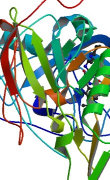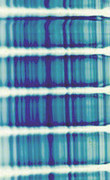4. Linear regression & Least squares estimationAims | Objectives | Reading | Handouts & Problem Sheets | Questions | LinksReturn to the Statistics 1 home page AimsIn this section we provide a brief introduction to the ideas and methods of simple linear regression.ObjectivesThe following objectives will help you to assess how well you have mastered the relevant material. By the end of this section you should be able to:
Suggested Reading
Handouts and Problem SheetsCopies of Handouts, Problem Sheets and Solution Sheets for the unit will be made available each week here.Handout for Section 4 | Problem sheet 5 | Solution sheet 5
Some people have said they have difficulty accessing the crabs
data for the homework. I think all the information you need is
on either the handout or the problems sheet, but for emphasis:
1. Download crabs.R to your computer
2. Use the File > Source R Code menu item or the
source('crabs.R') command to read it in to R.
[Steps 1 and 2 can be combined if you are using R while
online, as on the problem sheet]
3. attach(crabs)
The variables premoult and postmoult will then be
available to you in the normal way.
Copyright notice© University of Bristol 2011 All material in these pages is copyright of the University unless explicitly stated otherwise. It is provided exclusively for educational purposes at the University and is to be downloaded or copied for your private study only, and not for distribution to anyone else. Please also note that material from previous years' delivery of this unit is not necessarily a reliable indicator of what will be covered or examined this year. Questions - set this weekPROBLEM SHEET 5 -- Questions 1, 4, 5Interesting linksR demos - the function I used in lectures 8 and 9 to visualise some aspects of linear regression and least squares.There are a number of nice linear regression applets that will help develop your understanding of various aspects of the subject.
For example:
Note that I have no control over the content or availability of these external web pages.
The links may be slow to load, or may sometimes fail altogether - please email me to report if a link goes down.
Similarly applets may be slow to load or run, but beware that
you may experience problems if you try to exit them before they have finished loading. |








